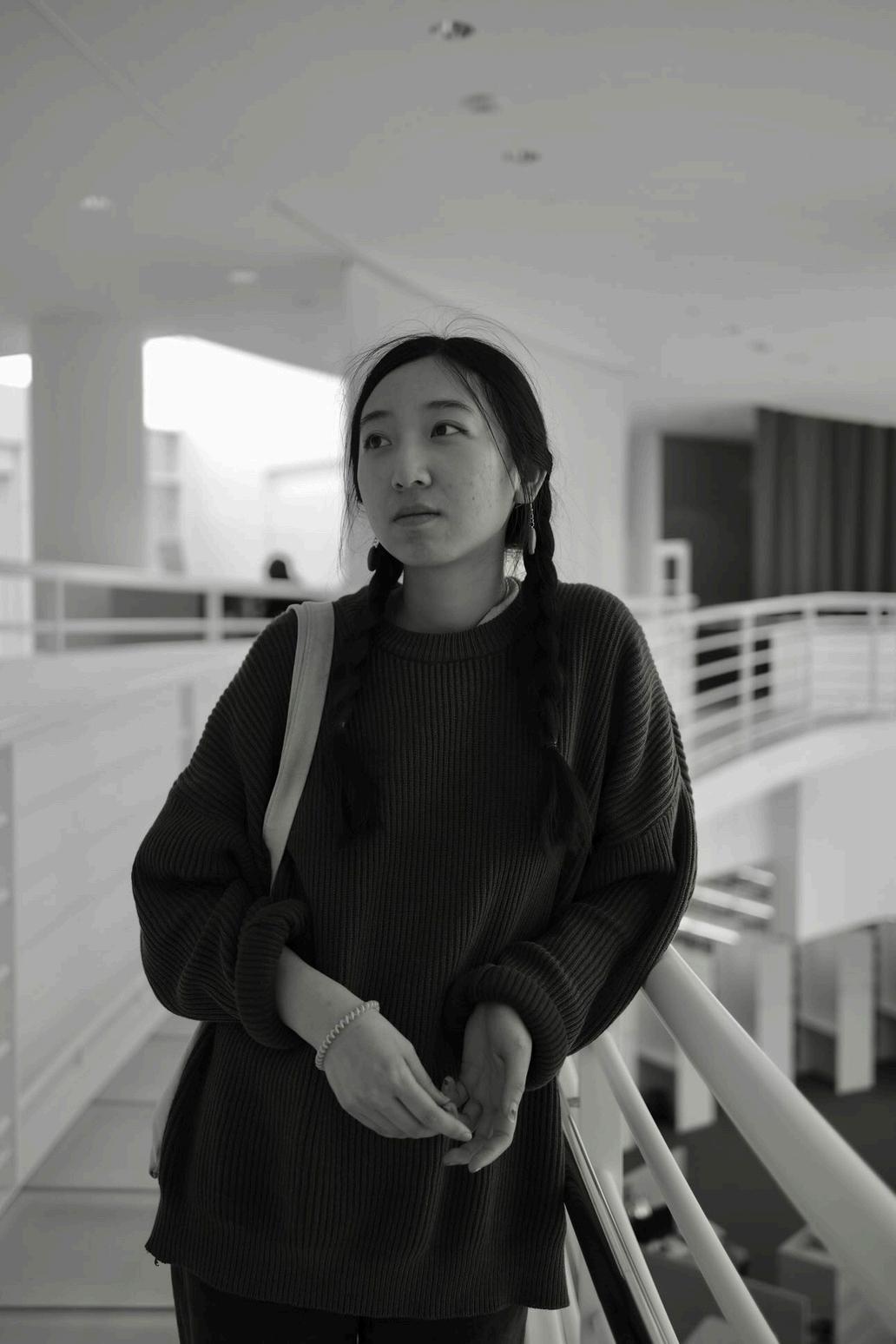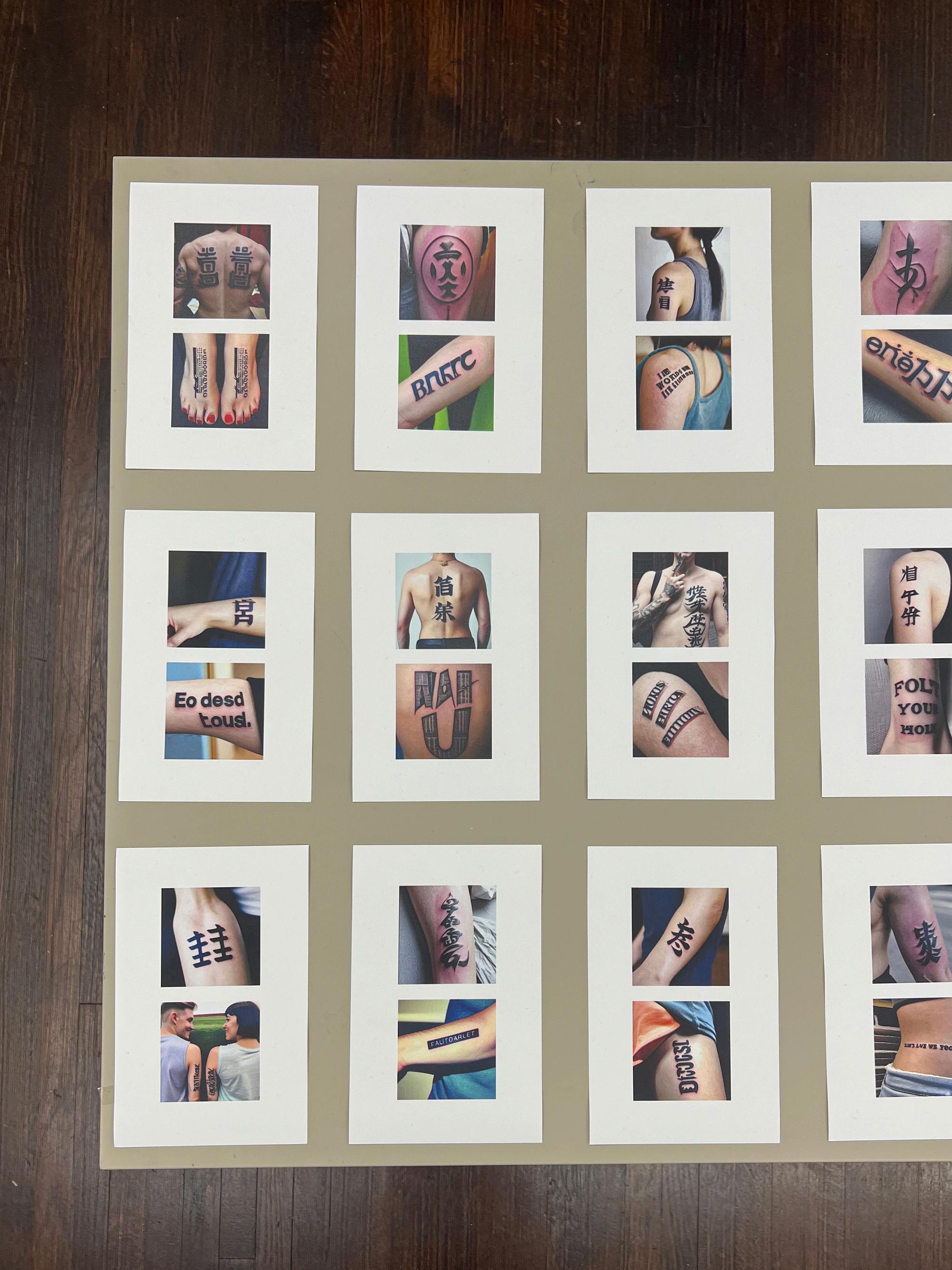JIAYUN CHEN multidisciplinary artist
Jiayun Chen is originally from Wenzhou, China, but currently resides in Los Angeles, California. She obtained her BFA from the California Institute of the Arts in 2020 and
has recently completed her Master of Fine Arts at USC Roski School of Art and Design. Slow-processes characterize her art practice by engaging with drawing, trophy-making, painting, sculptures, and installation-making. She is currently interested in language—and in particular, how language functions as a communication tool and the slippages that occur inevitably. Recently, her exhibition "tat skin slip tongue" took place at domestic project space Orlando in Koreatown, Los Angeles. She participated in "Ahorita!" at Charlie James Gallery and "Minor Gaps Between" at Human Resources in Los Angeles
Contact with the artist: https://jiayunchenstudio.cargo.site
INTERVIEW
Jiayun, your work focuses on the function of language and the inevitable slippages that occur in communication Can you elaborate on how this theme of mistranslation influences your artistic practice and how you incorporate it into your various mediums?
Mistranslation to me represents more than just poor language translation between languages, it encompasses the liminal space between two cultures when they are clashing and emerging. This theme of mistranslation is deeply intertwined with my own experiences. As an artist, my work is an extension of my personality and beliefs, so naturally, the concept of mistranslation becomes a central element in my practice
Living in Los Angeles for almost seven years, I've been immersed in a city known for its vibrant cultural diversity and constant interaction between various communities worldwide These daily interactions are a rich source of inspiration for me The city itself is a melting pot where cultures clash, merge, and constantly create new, hybrid forms This environment exposes the slippages and gaps in communication that occur when different cultural norms and languages intersect
Your art is characterized by slow processes, involving drawing, trophy-making, painting, sculptures, and installations How does the process contribute to your exploration of language and communication in your work?
The slowness in the making process of my work reflects an exploration of my inner self. There are two ways of making art: looking inward and looking outward. For works that involve looking inward, it is crucial for me to take the time to contemplate why I’m creating the work I’m creating. It’s always a learning process about myself, my interests, and my relationship with the world. In terms of techniques, I am not the most technique-focused artist; I appreciate de-skilled art as much as highly technical work. In other words, the technique in my work is a means to facilitate my artistic expression but is not the main focus
Your recent exhibition 'tat skin slip tongue' at Orlando in Koreatown, Los Angeles, delved into intriguing themes Can you share more about the concept behind this exhibition and how it addresses issues of language and cultural translation?
The exhibition 'tat skin slip tongue' is a continued investigation of cultural mistranslation, following my last solo show, 'Scattered All Over the World.' This exhibition focuses on mistranslated Chinese character tattoos on Western bodies, which were particularly prevalent in America and other Western countries during the 2000s and early 2010s.
The concept behind this exhibition is to explore these tattoos' meaning and examine the visual aspects of the fonts used The exhibition consists of two parts: one featuring found images of these tattoos sourced from the Internet, and the other showcasing AI-generated tattoo images that result in gibberish
I am fascinated by the space between image and language, which is where these tattoos exist These tattoos often lack the cultural context that text typically carries, reducing them to mere aesthetic shells However, the errors in these tattoos also possess an unintended poetic quality, which I find compelling The AI-generated images share a similar structure, where chance and randomness play a significant role
Having roots in Wenzhou, China, and currently residing in Los Angeles, how do your crosscultural experiences shape your perspective on language and communication? How do these experiences influence your art?
When I moved to the United States from China at the age of 15, it marked a significant turning point in my life I remember the challenge of not understanding the language, which made me feel disconnected from my surroundings
INTERVIEW
But I wouldn't describe it as a frightening experience because the distance also allowed room for imagination and interpretation I can still recall how looking at English text felt like a world of arbitrary and unpredictable meanings This uncertainty sparked my imagination about words from a more subjective perspective The cross-cultural experience is always surprising and complex - the humor, poetry, and unexpected moments are what I cherish the most As I spent more time in a city with diverse cultures, I came to realize the significance of the gap between these cultures in contributing to the city's vibrant cultural atmosphere
Looking ahead, are there any specific projects or themes you are excited to explore further?
After my recent solo show at Orlando, an experimental gallery space in Koreatown, Los Angeles, I see myself continuing to create work centered on mistranslation, as it remains a daily reality for me. This project allowed me to explore the relationship between artificial intelligence, language, and signs, leading to meaningful conversations that emerged from the exhibition.
I am grateful to LA Artcore for organizing Incubator, the program that facilitated these great discussions. It was also wonderful to have Matt Stromberg see the show, which made me realize just how connected and open the LA art scene is
I am eager to explore the intersection of language and architecture for my next project I’ve always been fascinated by the imagery of tilted towers, like the Tower of Pisa The precariousness of monuments evokes a sublime experience for me, similar to the instability and failure of language Both can be unpredictable and awe-inspiring in their own ways I recently went to see Ed Ruscha’s retrospective at LACMA, which made me reflect on the potential of text-based art It inspired me to think about the unique experiences texts and materials can create, and I’m excited about the possibilities ahead I’m still in the early stages of this project and will soon begin experimenting with different materials This project excites me a lot























